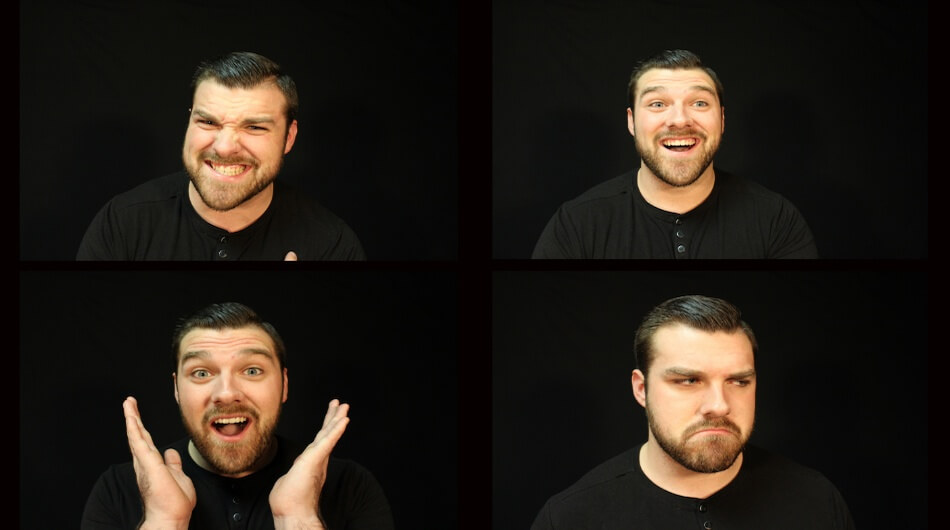The Science of CRO: How Psychology & Data Work Together
Conversion Rate Optimization (CRO) isn't just a buzzword—it's the secret to unleashing your website's full power and potential. CRO focuses on...
I know what I am looking for, and would like to chat.
A team of data-driven marketers obsessed with generating revenue for our clients.
Because the proof is in the pudding.
At Campaign Creators we live by three principles: Autonomy, Mastery, Purpose.
2 min read
 Campaign Creators
:
3/18/16 9:00 AM
Campaign Creators
:
3/18/16 9:00 AM

Marketers are often plagued with the question: How do I get people to buy my product or service? Market research is often a complicated and tedious process that can help marketing teams uncover where, what, and how, to position a brand. As an aspiring content strategist myself, I took a listen to the Six Pixels of Separation podcast episode #483, "Decoding Human Motivation with David Forbes."
David Forbes made it his career to understand the subconscious motivations behind consumer behavior. In his book, The Science of Why: Decoding Human Motivation and Transforming Marketing Strategy, Forbes provides strategies so marketers can do a better job of reaching their target customers. His experience studying clinical, cognitive, and developmental psychology informed his methods of research and unwittingly drew him into the market research space.
He founded the Forbes Consulting Group which provides psychological insight into a brand's consumers. Usually, people would think that applying a strong psychological knowledge into business would seem like manipulation, but that's far from the truth. It's more about persuasion in order to change people's minds or shift their opinions on a particular topic.
Forbes integrated "deep psychology" into his practice. Deep psychology refers to motivations in a person's psyche that aren't immediately aware to them or can be studied with simple observations. People generally think of themselves as rational human beings. They perceive that all of their actions and decisions are based on a set of logic. There is a great disconnect here because the human mind doesn't really work like that. Our decisions are highly influenced by external, subconscious forces that guide and shape our behavior. These emotional forces play off of our own aspirations and frustrations. Our minds are constantly searching for inspiration to jump start our chances to finally go through with our aspirations or cease having to put up with our frustrations.
Forbes expanded on this concept with an example of a business case he personally worked on. His client was in the business of marketing furniture polish. A competitor was pushing into their market share by showing that their product simply pulled the dust off as opposed to leaving an oily residue like his client's product. After some deliberation, Forbes and his team assessed that a primary motivation for wanting to polish wood furniture was the desire to nurture it as if it was a living entity. He would go on to reposition his client's product as a skin care approach that nurtured and conditioned the furniture's wood surface just like an organism's skin. The competitor couldn't keep up with Forbes' insight into the deeply-seeded motivations from consumers. But how does one pull out that subconscious sentiment? How does one come up with this metaphor of skincare? To Forbes, it was as easy. He simply thought about how his product worked. The furniture polish was applied and rubbed to the surface. He then made the connection between a living organism (tree) and positioned his message as something that nurtures and cares for an entity.
Forbes went on to ask, what goes on in the brain when someone is seeing an image for the first time? In his research he discovered that a person's brain activity could be segmented on a millisecond by millisecond basis. During the first 50-150 milliseconds, the brain works to recognize what exactly it's looking at. At 600 to 700 milliseconds, brain activity is centered in the limbic system which is associated with our emotions. At the 800 to 850 millisecond mark, brain activity in the pre frontal lobes indicates that a person is consciously thinking about the image. There is a window of opportunity in which an individual is purely motivated by his or her emotional state of mind. Think of it as a bottomless ocean of "feeling." A psychoanalytical and market research approach essentially deep dives into that river to differentiate how people think and what they say. The difference is between night and day.
In a world that has become more and more cluttered by sensory perceptions, we are still guided by filters, emotional filters. These filters create a "division" between one moment and the next.
How do you dictate consumer behavior? Let us know in the comments below.

Conversion Rate Optimization (CRO) isn't just a buzzword—it's the secret to unleashing your website's full power and potential. CRO focuses on...

What’s the first thing that comes to mind when you hear or see the word, “salesperson”? In a recent Campaign Creators study, the most common...

As a marketer, you've tried every known lead-generating tactic known to man and then some. But leads don't necessarily convert to customers right...